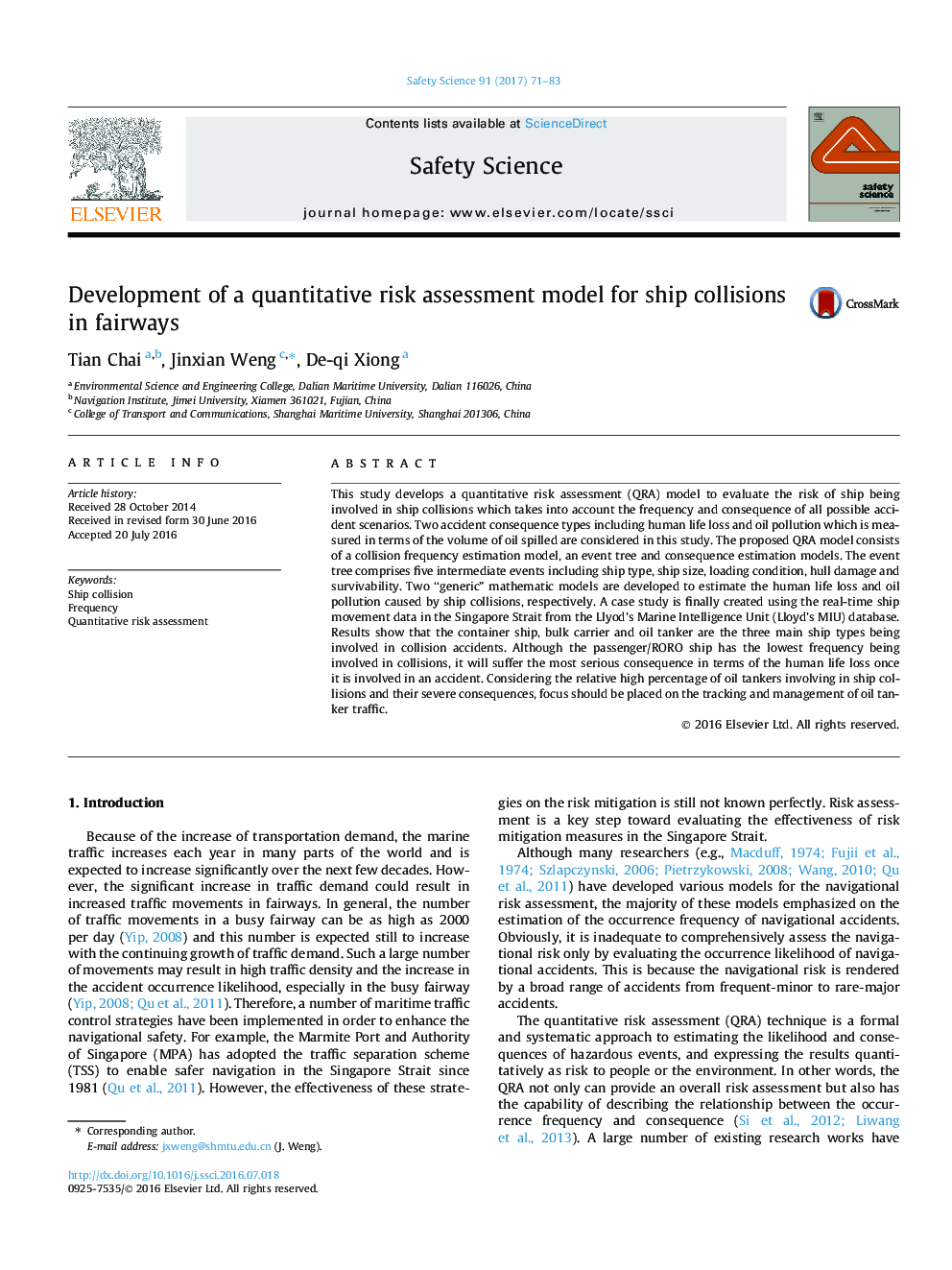| کد مقاله | کد نشریه | سال انتشار | مقاله انگلیسی | نسخه تمام متن |
|---|---|---|---|---|
| 588927 | 1453380 | 2017 | 13 صفحه PDF | دانلود رایگان |
• A quantitative risk assessment model to evaluate the risk of ship being involved in collision.
• Two “generic” mathematic models are built to estimate the human life loss and oil pollution.
• Container ship, bulk carrier and oil tanker are three main ship types involved in collisions.
• The passenger/RORO ship has the lowest collision frequency but biggest human life loss.
This study develops a quantitative risk assessment (QRA) model to evaluate the risk of ship being involved in ship collisions which takes into account the frequency and consequence of all possible accident scenarios. Two accident consequence types including human life loss and oil pollution which is measured in terms of the volume of oil spilled are considered in this study. The proposed QRA model consists of a collision frequency estimation model, an event tree and consequence estimation models. The event tree comprises five intermediate events including ship type, ship size, loading condition, hull damage and survivability. Two “generic” mathematic models are developed to estimate the human life loss and oil pollution caused by ship collisions, respectively. A case study is finally created using the real-time ship movement data in the Singapore Strait from the Llyod’s Marine Intelligence Unit (Lloyd’s MIU) database. Results show that the container ship, bulk carrier and oil tanker are the three main ship types being involved in collision accidents. Although the passenger/RORO ship has the lowest frequency being involved in collisions, it will suffer the most serious consequence in terms of the human life loss once it is involved in an accident. Considering the relative high percentage of oil tankers involving in ship collisions and their severe consequences, focus should be placed on the tracking and management of oil tanker traffic.
Journal: Safety Science - Volume 91, January 2017, Pages 71–83
